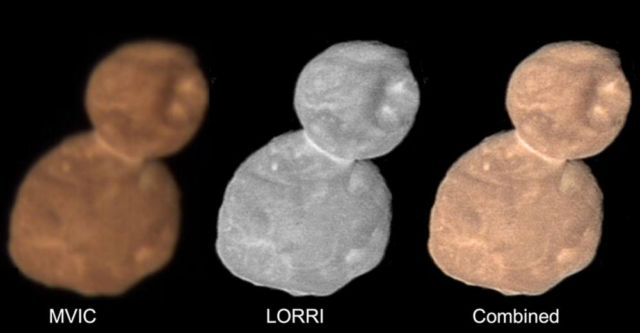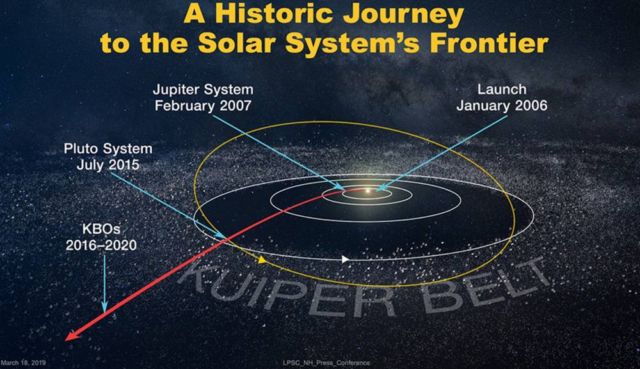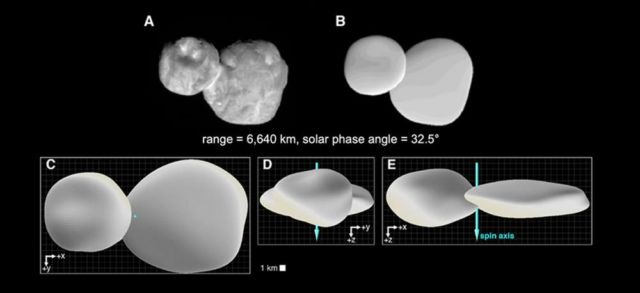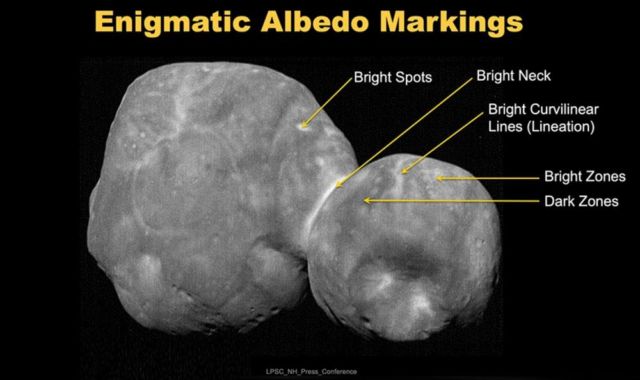Ultima Thule, the farthest object ever explored is slowly revealing its secrets, as scientists piece together the puzzles.
Ultima Thule, the Kuiper Belt object NASA’s New Horizons spacecraft flew past on New Year’s Day, four billion miles from Earth.
Above, image credit: NASA/Johns Hopkins University Applied Physics Laboratory/Southwest Research Institute
Top, image credit: NASA/Johns Hopkins University Applied Physics Laboratory/Southwest Research Institute/ESA
Analyzing the data New Horizons has been sending home since the flyby of Ultima Thule (officially named 2014 MU69), mission scientists are learning more about the development, geology and composition of this ancient relic of solar system formation.
Credit: NASA/Johns Hopkins University Applied Physics Laboratory/Southwest Research Institute
The team discussed those findings today at the 50th Lunar and Planetary Science Conference in The Woodlands, Texas.
Ultima Thule is the first unquestionably primordial contact binary ever explored. Approach pictures of Ultima Thule hinted at a strange, snowman-like shape for the binary, but further analysis of images, taken near closest approach – New Horizons came to within just 2,200 miles (3,500 kilometers) – have uncovered just how unusual the KBO’s shape really is. At 22 miles (35 kilometers) long, Ultima Thule consists of a large, flat lobe (nicknamed “Ultima”) connected to a smaller, rounder lobe (nicknamed “Thule”).
Credit: NASA/Johns Hopkins University Applied Physics Laboratory/Southwest Research Institute
This strange shape is the biggest surprise, so far, of the flyby.
New Horizons Principal Investigator Alan Stern, of the Southwest Research Institute, Boulder, Colorado, said:
“We’ve never seen anything like this anywhere in the solar system. It is sending the planetary science community back to the drawing board to understand how planetesimals – the building blocks of the planets – form.”
Credit: NASA/Johns Hopkins University Applied Physics Laboratory/Southwest Research Institute
source New Horizons









Leave A Comment